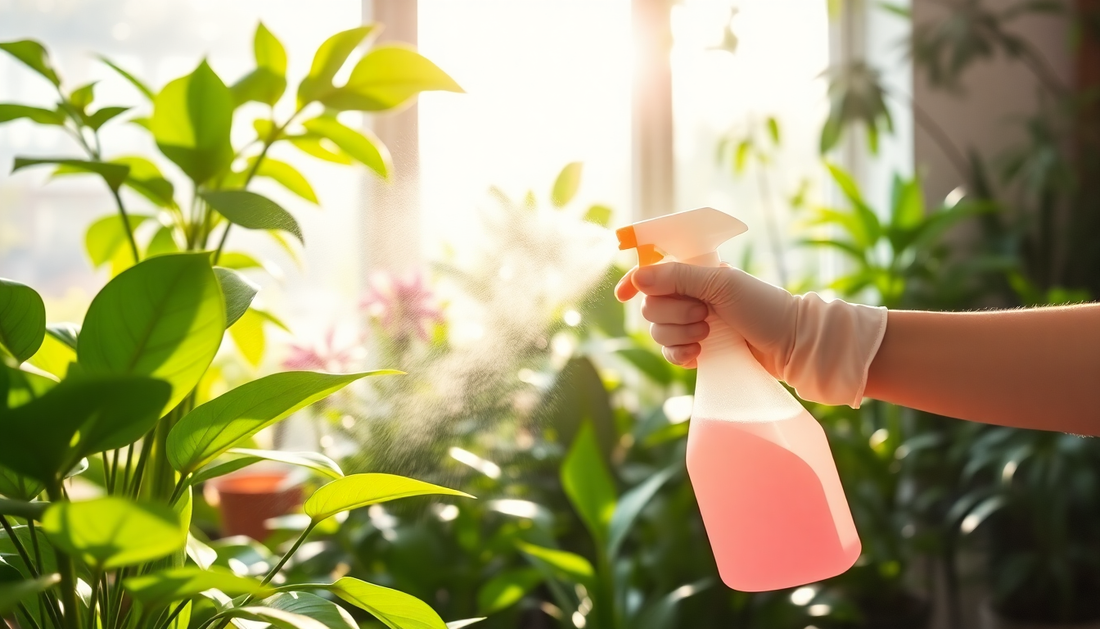
Safeguarding Your Houseplants from Airborne Bacteria: A Comprehensive Guide
As the world becomes increasingly urbanized, more and more people are turning to indoor gardening as a way to bring a touch of nature into their homes. However, with this growing trend comes a unique set of challenges, one of which is the risk of airborne bacterial infections affecting our beloved houseplants. In this comprehensive guide, we'll explore the various ways in which you can safeguard your indoor plants from these invisible threats, ensuring their long-term health and vitality.
Understanding Airborne Bacterial Infections in Houseplants
Houseplants, like any living organism, are susceptible to a variety of diseases and infections. One of the most common and insidious of these is the threat posed by airborne bacteria. These microscopic organisms can be found in the air we breathe, and they can easily make their way into our indoor growing environments, where they can wreak havoc on the delicate ecosystems of our beloved plants.
Airborne bacterial infections can manifest in a variety of ways, from unsightly lesions and discoloration to stunted growth and even plant death. Some of the most common bacterial culprits include Pseudomonas, Erwinia, and Xanthomonas, each of which can thrive in the warm, humid conditions often found in indoor growing spaces.
Improving Air Circulation: The Key to Prevention
One of the most effective ways to safeguard your houseplants from airborne bacterial infections is to ensure that your growing environment has optimal air circulation. Stagnant air can create the perfect breeding ground for these harmful microorganisms, allowing them to spread quickly and infect your plants.
To improve air circulation, consider investing in a high-quality air purifier or fan. Strategically placing these devices around your indoor growing area can help to create a constant flow of fresh, clean air, making it more difficult for bacteria to take hold. Additionally, you can encourage natural air movement by opening windows or doors whenever possible, allowing the outdoor breeze to circulate through your indoor space.
Maintaining Optimal Humidity Levels
In addition to air circulation, the humidity level in your indoor growing environment can also play a significant role in the prevention of airborne bacterial infections. Many of the bacteria that can harm your houseplants thrive in damp, humid conditions, where they can reproduce and spread more easily.
To maintain optimal humidity levels, consider using a dehumidifier or a humidifier, depending on the specific needs of your indoor growing space. Aim for a humidity range of 40-60%, as this will create an environment that is less hospitable to harmful bacteria while still providing the moisture your plants require.
Proper Watering Techniques
Proper watering techniques are also crucial in the fight against airborne bacterial infections. Overwatering can create the perfect conditions for bacteria to thrive, while underwatering can stress your plants and make them more susceptible to disease.
When watering your houseplants, be sure to use clean, filtered water and avoid getting the leaves and stems wet. Instead, focus on watering the soil directly, ensuring that the roots have access to the moisture they need without creating a damp, humid environment that could attract harmful bacteria.
Sanitizing Your Growing Environment
Regular sanitization of your indoor growing environment is another essential step in safeguarding your houseplants from airborne bacterial infections. This includes wiping down surfaces, disinfecting tools and equipment, and even sterilizing the soil or growing media used in your planters.
When it comes to disinfecting, be sure to use products that are specifically designed for use in indoor gardening environments. Avoid harsh chemicals that could potentially harm your plants, and instead opt for natural, plant-safe alternatives like hydrogen peroxide or diluted bleach solutions.
Monitoring and Early Detection
Finally, it's crucial to be vigilant in monitoring your houseplants for any signs of bacterial infection. Early detection is key, as it allows you to take swift action to address the issue before it can spread and cause more widespread damage.
Keep a close eye on your plants, looking for any unusual discoloration, lesions, or changes in growth patterns. If you suspect that your plants may be infected, act quickly to isolate the affected individuals and take steps to treat the issue, such as pruning away any damaged or infected foliage.
By following these comprehensive strategies for safeguarding your houseplants from airborne bacterial infections, you can ensure that your indoor garden remains healthy, vibrant, and thriving for years to come. Remember, prevention is key, and by taking a proactive approach to maintaining a clean, well-circulated growing environment, you can protect your beloved plants from these invisible threats.
Conclusion
Maintaining the health and vitality of your indoor plants is a rewarding and fulfilling pursuit, but it's not without its challenges. Airborne bacterial infections can pose a significant threat to your beloved houseplants, but with the right knowledge and strategies, you can effectively safeguard them from these invisible foes.
By focusing on improving air circulation, maintaining optimal humidity levels, employing proper watering techniques, and regularly sanitizing your growing environment, you can create a thriving, disease-resistant indoor garden that will bring joy and beauty to your home for years to come. Remember, vigilance and early detection are key, so keep a close eye on your plants and act quickly at the first sign of trouble.
With this comprehensive guide in hand, you're well on your way to becoming a master of indoor plant care, ensuring that your houseplants not only survive but thrive in the face of airborne bacterial threats. So, let's get started on creating a lush, healthy, and vibrant indoor oasis that will be the envy of all your friends and neighbors.







No comments